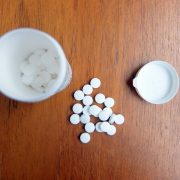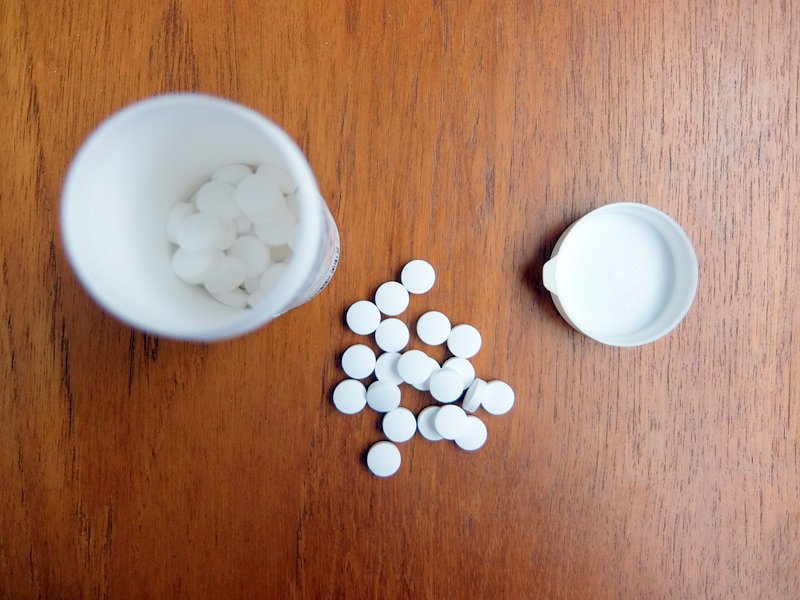Campden Tablets: What Are They, Uses & How They Work
Campden tablets have multiple uses in homebrewing and are a versatile tool in both winemaking and beer making. Campden tablets are one of 2 chemicals, either sodium or potassium metabisulfite which have unique attributes useful to the brewer.
Firstly they are used to sanitise wine musts and juices as well as equipment but can also be used during racking as both a measure to prevent bacteria from spoiling the wine and also as an antioxidant to keep air from staling the wine.
Along with this, they can be used in removing chlorine or chloramine from water sources which is particularly useful to beer makers. Chlorine in water reacts with compounds in malted barley and can create unpleasant off flavours. Dissolving a crusheCampdenen tablet in up to 20 litres or 5 gallons of water is an effective way to reduce the chlorine to negligible levels.
Table of Contents
What Are Campden Tablets?
Campden tablets are a sulphur based compound and made of either sodium or potassium metabisulfite, but most frequently are potassium metabisulfite. Their usage in simple terms is to add sulfites to a solution to either kill undesirable microbes, stabilise and prevent oxidation or to remove chlorine from solution.
Brewers are able to buy Campden tablet, sodium metabisulfite and potassium metabisulfite and all three have the exact same usage and end result.
Campden tablets can be either potassium or sodium metabisulfite in a tablet form making it very simple to measure a dosage. Look on the package for whether the tablets are potassium or sodium metabisulfite.
What’s The Difference Between Sodium and Potassium Metabisulfite?
Both of these additives do the exact same thing. The only difference between sodium metabisulfite and potassium metabisulfite is that they will leave a residual trace of either sodium or potassium.
Some brewers prefer potassium metabisulfite as they deem it to have a more neutral flavour, the amounts being used however are very small so I tend not to worry.
How Do Campden Tablets Work?
Potassium metabisulfite dissolves in water and creates sulphur dioxide and sulfites. These compounds have antioxidant properties and sulphur dioxide is widely used in the food and beverage industry as an antimicrobial treatment.
What happens when we dissolve these compound in out wine is that any oxygen
Uses For Campden Tablets
Treating Juices and Must for Wine Making: Metabisulfite is a really simple way to sanitise fruit for wine making. Of course, fruit that grows outside is covered in wild yeasts and bacteria and particularly for hedgerow or country wines we need to ensure these bacteria and wild yeast are minimised before adding our own preferred yeast strain (although it is common for some grape wine makers to use the wild yeast for a spontaneous fermentation).
The way in which you treat a must with Campden is simple. A Campden tablet is crushed and dissolved into the must and stirred thoroughly. The Campden tablet is added and then you will need to wait at least 24 hours before adding your yeast otherwise the metabisulfite will greatly inhibit the yeast stalling fermentation.
The typical dosage for treating the must before fermentation is a rate of 1 tablet per gallon or 5 litres of wine.
Preventing Oxidation After Racking: Once the wine has fully fermented out and begun to settle it is around this time we would want to rack the wine to a demijohn or carboy to condition and clear. During racking we run the risk of introducing oxygen and air into the wine, this can arise from splashing and exposure to the air whilst the transfer or syphoning is happening.
To combat this issue we can simply add one Campden tablet per gallon which binds to any oxygen in the wine effectively removing it and preventing oxidation. Oxidation is bad for almost any home brew and will affect the flavour and colour of the wine turning it an unappealing shade of brown in both red and white wines.
Removing Chlorine From Brewing Water: All tap water you use to either brewing beer or make wine will have some form of chlorine or chloramine in it. This is an undesirable chemical that we don’t want to introduce to any home brew whether that be beer, wine or mead so we need to remove it.
Adding half a Campden tablet for every 5 gallons or 20 litres of water will remove chlorine or chloramine present. The potassium metabisulfite reacts with the chlorine to break it down into chloride, sulfate, and ammonia which are not going to add undesirable flavour compounds to your home brew and in some cases are beneficial.
As a Sanitising Solution For Equipment: Potassium metabisulfite can be used as a sanitising solution although it is more cost effective if you buy powdered potassium metabisulfite.
To make a sanitising solution you will need 16 Campden tablets per gallon of water. The solution can be added to a bucket with other equipment that needs sanitising. Seal the bucket which will allow the sulphur dioxide gas to sanitise all the equipment it contacts. The solution can then be discarded and the equipment left to dry.
It is the sulphur dioxide produced that sanitises and neutralises microbes rather than the solution.
What Campden Tablets Won’t Do?
Contrary to what most people believe, Campden tablets will not stop a fermentation completely so they should not be used to stabilise a wine. If you add Campden tablets whilst there is active fermentation the yeast is likely to stall but will eventually they will restart.
To stabilise a wine and prevent further fermentation follow this guide.
When Do You Add Campden Tablets To Wine?
This is a common question that is easy enough to address. When you add Campden tablets or potassium metabisulfite to wine some of the sulfites remain in the wine.
You will notice that most commercial wines state on the label that the wine contains sulfites.
Adding too many Campden tablets will result in more sulfites in the finished wine which will affect the flavour so we do not want to add too many.
I recommend using no more than 3 Campden tablets per gallon of wine spaced out into these three separate occasions.
- 1 Campden tablet added before the yeast to neutralise the must. Wait 24 hours before adding the yeast for the effects of the metabisulfite to dissipate.
- Add 1 tablet after the first racking to prevent oxidation and to help stabilize the wine as it conditions.
- Add 1 Campden tablet just prior to bottling again to stabilize the wine and prevent oxidation
With just these three additions you will be well within the limits acceptable for sulfites in the finished wine and have a stable finished product.
Campden Tablet Safety
As with any additive, there is safety information to be aware of and I always advise to follow the instructions on the package you buy. Sodium Metabisulfite is a skin and eye irritant so protection should be worn when handling it. Never use over the recommended dosage in your home brew and be aware that some people can be allergic to sulphites.





Whats the difference between wild yeast and wine yeast from a pack, if we use campden tablets we need to use wine yeast, but if we want to experiment with wild yeast and add campden tablets after the first racking or to bottling, what could happen? Could stop the malolactic fermentation?
Hi, if we work with the wild yeast, what can happen if we add campden tablets after the first racking? Is recommendable? Also adding to pior the bottles?
Hi Miguel
Wine yeast from a package is one particular strain of yeast this means you know exactly what the result is going to be as there is only one strain fermenting the wine. Wild yeast is comprised of multiple microbes and organisms and the results of each batch may differ slightly each time.
Adding Campden tablets after racking is a measure against oxidising the wine. It will also inhibit any further fermentation but may not stop it completely. If you have Brettanomyces, for example, which will be working for many months after racking the Campden tablet is going to severely inhibit this activity, however, it may not stop it completely.
Hope this helps
Yeast as in brewing yeast is yeast it is not bacteria it is a single cell member of the fungi family oNe of the reason thatwine3s original had a particular character. was that it was a particular yeast that was predominant in a particular region area even a single vineyard. It is similar with cheeses though the main fermentation agents in this case are LACTO BACTERIA that ferment LACTOSE [milk sugar] into LACTIC ACID which is a preservative in that it severley restricts the growth of most other,. bacteria , This is basically the same reaction as in SALAMI. However the BLUE’s in ‘blue cheeses’ are once again YEASTS or MOULDS mainly from the PENICILLIUM family and related to PENICILLIN.
HELP PLEASE!
I put 2 camden tablets per gallon of apple juice by mistake when I should only have put 1.
I have added yeast after 48 hours and have the drums at 28oC .
After 24 hours nothing is happening.
Do I need to add more yeast?
Thanks Alan
The yeast may be inhibited with the dosage but the Campden tablet will dissipate so it shouldn’t be a big problem. If the fermentation hasn’t started after 48 – 72 hours then consider pitching more yeast.
Hope this helps.
“All tap water you use to either brewing beer or make wine will have some form of chlorine or chloramine in it.” This is not true. Not all tap water contains chlorine. Our tap water comes from a spring and is not treated, as does the water for the 130 homes on our island.
Is there a certain time period between the addition of Campton tablets?
Say I add one tablet per gallon after fermentation and I decide to rack in two weeks. Should I add again or wait until next racking?
Some wines can clear and be bottled within six weeks and I don’t want to add if not needed.
Adding Campden tablets helps to remove oxygen from the wine. If you are racking a few times with not much time in between then I would probably just add them the once.
I can not find potassium metabisulfite, I only have sodium metabisulfite.if I use this sodium metabisulfite will it affect negatively the flavor of the wine? I appreciate your recommendación.
They can be used interchangeably so it’s not a problem.
How long after adding stabiliser and/or Camden is the wine ok to drink?
I’ve been out of brewing for a while but I found a totally cleared very dry gallon of mead that I started about a year ago and forgot about!
I’ve since filtered and stabilised it by adding a stabiliser and two crushed Camden’s and was wondering when it would be ok to drink? I have a Viking re-enactment coming up and some of our warriors are quite keen to get tasting 😆
Regards.
Campden tablets generally dissipate within 24-48 hours so I would tend to leave it at minimum a couple of days